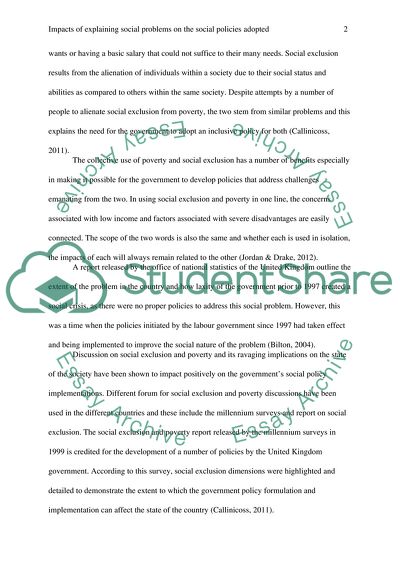Cite this document
(Impacts of Explaining Social Problems on the Social Policies Adopted Term Paper, n.d.)
Impacts of Explaining Social Problems on the Social Policies Adopted Term Paper. Retrieved from https://studentshare.org/social-science/1806287-explanations-for-social-problems-have-important-implications-for-the-kind-of-social-policies-adopted-by-governments-discuss-with-reference-to-two-of-the-following-areas-a-poverty-and-social-exclusion-b-crime-and-an
Impacts of Explaining Social Problems on the Social Policies Adopted Term Paper. Retrieved from https://studentshare.org/social-science/1806287-explanations-for-social-problems-have-important-implications-for-the-kind-of-social-policies-adopted-by-governments-discuss-with-reference-to-two-of-the-following-areas-a-poverty-and-social-exclusion-b-crime-and-an
(Impacts of Explaining Social Problems on the Social Policies Adopted Term Paper)
Impacts of Explaining Social Problems on the Social Policies Adopted Term Paper. https://studentshare.org/social-science/1806287-explanations-for-social-problems-have-important-implications-for-the-kind-of-social-policies-adopted-by-governments-discuss-with-reference-to-two-of-the-following-areas-a-poverty-and-social-exclusion-b-crime-and-an.
Impacts of Explaining Social Problems on the Social Policies Adopted Term Paper. https://studentshare.org/social-science/1806287-explanations-for-social-problems-have-important-implications-for-the-kind-of-social-policies-adopted-by-governments-discuss-with-reference-to-two-of-the-following-areas-a-poverty-and-social-exclusion-b-crime-and-an.
“Impacts of Explaining Social Problems on the Social Policies Adopted Term Paper”, n.d. https://studentshare.org/social-science/1806287-explanations-for-social-problems-have-important-implications-for-the-kind-of-social-policies-adopted-by-governments-discuss-with-reference-to-two-of-the-following-areas-a-poverty-and-social-exclusion-b-crime-and-an.


